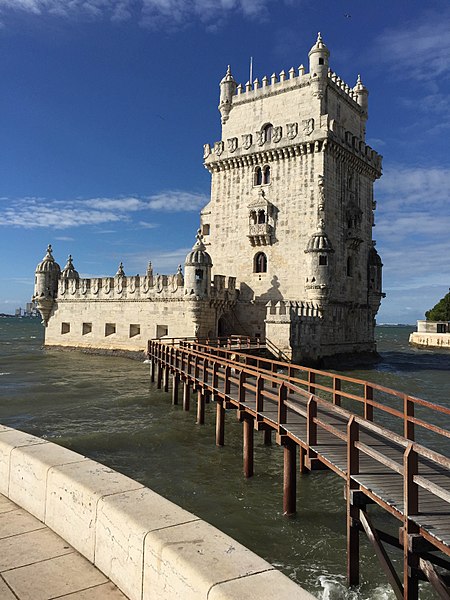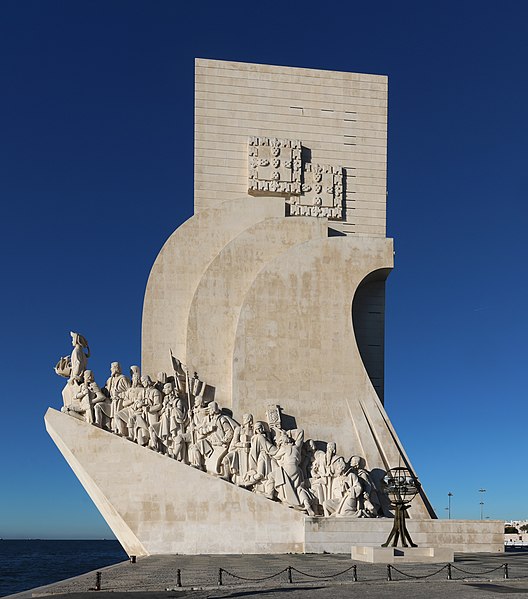São Jorge Castle, sometimes known in English as Saint George's Castle, is a historic castle in the Portuguese capital of Lisbon, located in the freguesia of Santa Maria Maior. Human occupation of the castle hill dates to at least the 8th century BC while the oldest fortifications on the site date from the 2nd century BC. The hill on which Saint George's Castle stands has played an important part in the history of Lisbon, having served as the location of fortifications occupied successively by Phoenicians, Carthaginians, Romans, and Moors, before its conquest by the Portuguese in the 1147 Siege of Lisbon. Since the 12th century, the castle has variously served as a royal palace, a military barracks, home of the Torre do Tombo National Archive, and now as a national monument and museum.
The visible profile of Saint George's Castle overlooking the historical center of Lisbon.
A 16th-century illuminated manuscript of Lisbon, in the Crónica de D. Afonso Henriques by Duarte Galvão, depicting the castle and walls, including the Royal Palace (Alcáçova) (1505)
Caravels and carracks in the Tagus River, with the castle in the centre distance, unknown artist (1572)
The castle walls and towers, constructed during the Moorish occupation of Lisbon
Lisbon is the capital and largest city of Portugal, with an estimated population of 548,703 as of 2022 within its administrative limits and 2,871,133 within the metropolis. Lisbon is mainland Europe's westernmost capital city and the only one along the Atlantic coast, the others being on islands. The city lies in the western portion of the Iberian Peninsula, on the northern shore of the River Tagus. The western portion of its metro area, the Portuguese Riviera, hosts the westernmost point of Continental Europe, culminating at Cabo da Roca.
Image: Lisbon (36831596786) (cropped)
Image: Lisbon 129 (36502263701)
Image: Lisbon Praça do Comércio BW 2018 10 03 13 33 44 s
Image: Belem Padrao dos Descobrimentos








